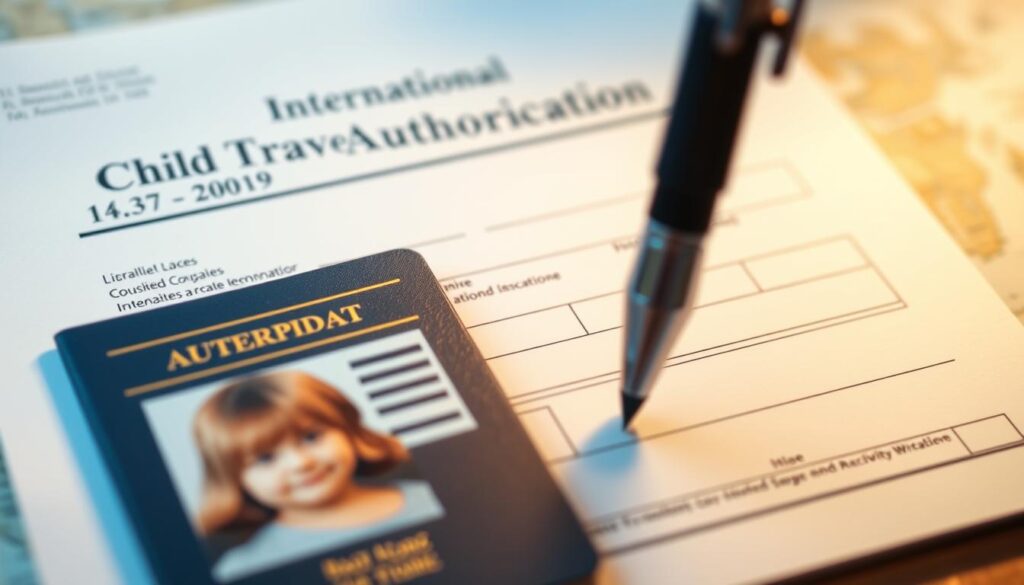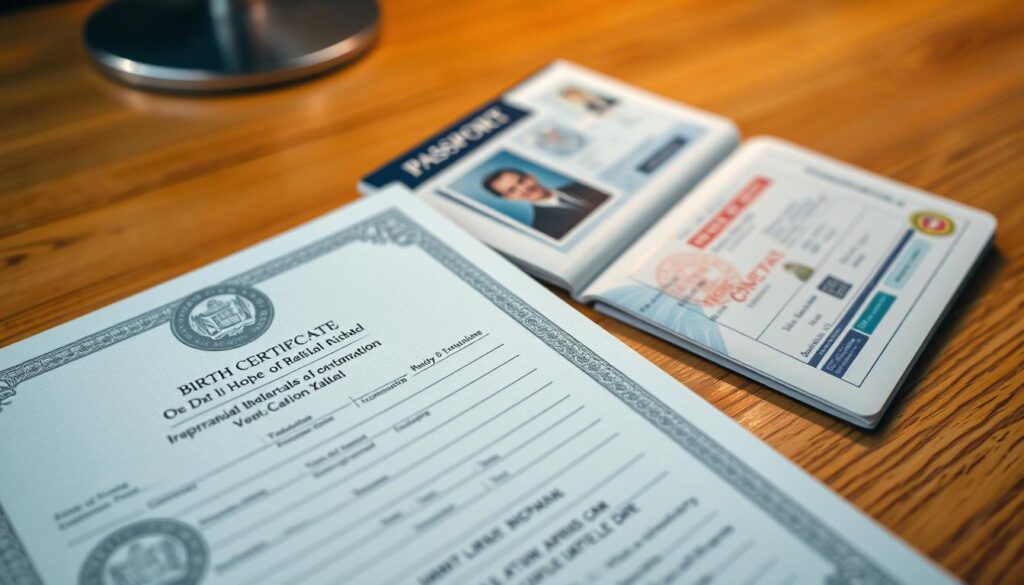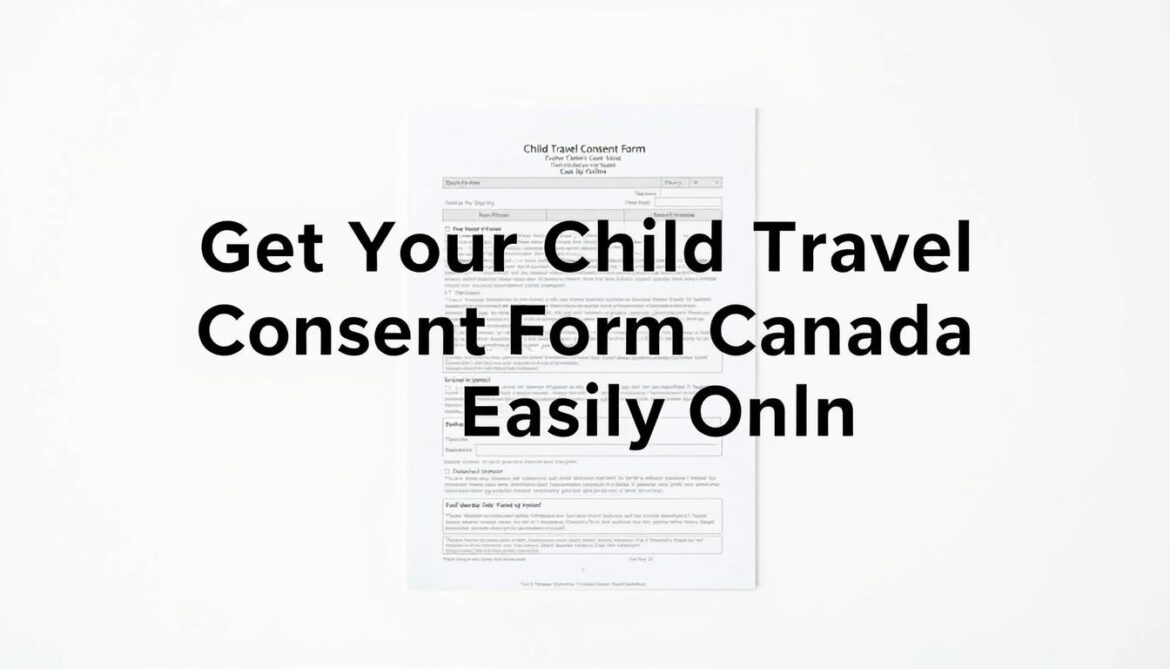Did you know 1 in 3 Canadian families face unexpected delays at borders due to missing documentation? A single piece of paper can mean the difference between smooth international journeys and hours of stressful questioning. For guardians organizing trips abroad, preparation is key – especially when minors aren’t accompanied by all custodial parents.
Official online platforms now simplify how families access standardized templates that meet global entry requirements. These digital tools eliminate paperwork guesswork while aligning with Canadian government guidelines. Completing the process remotely saves time and ensures you’re using the most up-to-date format recognized by immigration authorities worldwide.
Though not legally required, this documentation acts as a safeguard. Border agents in over 60 countries routinely request proof of authorization for solo-travelling youths. Having it readily available prevents last-minute complications during departure or re-entry.
Key Takeaways
- Digital platforms provide government-approved templates accessible from home
- Simplifies border processes for unaccompanied minors entering/exiting countries
- Reduces risk of delays or denied entry at international checkpoints
- Aligns with both Canadian recommendations and global travel standards
- Can be completed collaboratively by guardians across locations
Understanding Child Travel Consent: Requirements and Importance
Crossing borders with minors? Proper authorization documents prevent unexpected hiccups. Whether they’re joining a school trip or visiting relatives abroad, certain scenarios demand written permission from guardians. Canada’s visa portal outlines specific cases where this applies, helping families stay compliant with global entry rules.

When Is a Consent Letter Needed?
Authorization becomes essential if a young person isn’t accompanied by both guardians. This includes group outings with sports teams, temporary stays with relatives, or situations where only one parent is present. Even brief excursions across borders—like day trips to the U.S.—require this documentation. Authorities in over 60 nations may request proof during entry checks or re-entry into Canada.
Benefits of Preparing Ahead
Starting early lets you gather signatures, notarize the document, and resolve potential disputes between guardians. Last-minute preparations often lead to missing details that could delay departures. Having everything ready weeks in advance also ensures alignment with varying age definitions abroad—many regions recognize minors as anyone under 19.
Digital templates from trusted sources simplify the process. They provide clear structures for including dates, destinations, and guardian contact details. This proactive approach reduces stress at checkpoints and keeps journeys focused on creating memories, not solving paperwork puzzles.
Child Travel Consent Form Canada: Your How-To Guide
Preparing authorization for young travellers involves more than just packing bags. Start by visiting the Canada visa portal to access the recommended template. This fillable PDF guides you through essential fields without requiring legal expertise.

Every effective document needs three core elements: guardian details, trip specifics, and companion credentials. List full names, addresses, and phone numbers for all involved parties. Specify exact departure/return dates and destinations using official city names.
| Section | Required Details | Purpose |
|---|---|---|
| Guardian Data | Full names, contact info | Verifies authority |
| Trip Timeline | Dates, locations | Prevents overstays |
| Companion Info | Relationship, ID numbers | Confirms supervision |
Customize the template for unique situations like sports tournaments or extended stays. Add emergency contacts and medical notes if needed. Border agents appreciate extra clarity – vague phrases like “European tour” often trigger delays.
Complete the form electronically for neatness, then print for signatures. Both guardians should initial each page. Keep digital copies accessible during your journey through cloud storage or email attachments.
Essential Documents for Travel Outside Canada
Border agents scrutinize youth documentation more closely than many parents realize. While passports remain the primary identification, they lack parental details – creating potential gaps during international checks. This makes supplementary paperwork vital for proving guardianship relationships abroad.

Birth Certificate and Other Identifiers
The long-form birth certificate shines here. Unlike standard versions, it lists both guardians’ full names and serves as concrete proof of family ties. Though not compulsory, immigration officials in 78% of nations prefer this format according to the Canada visa portal’s latest advisory.
Pack these essentials for stress-free crossings:
| Document Type | Purpose | Format |
|---|---|---|
| Long-form birth certificate | Confirms parental relationships | Original + copy |
| Valid passport | Primary identification | Original |
| Notarized consent letter | Authorization proof | Physical & digital |
| Destination-specific IDs | Meets local regulations | Varies by country |
Always verify entry rules with embassies beforehand. Some regions demand extra paperwork like vaccination records or residency permits. Remember: Permanent residents and Indigenous persons under the Indian Act retain entry rights, but must still present compliant documentation.
Carry originals whenever possible – 92% of border agents prioritize them over copies according to Immigration, Refugees and Citizenship Canada. Store backups securely in cloud storage for emergency access during trips.
Navigating Parental and Guardian Requirements
Understanding who must authorize international trips prevents legal complications. The Canada visa portal outlines specific rules based on family dynamics. Married or common-law partners not joining the trip need both signatures, even if custody arrangements differ.
Separated or divorced parents follow different guidelines. Only those with custody or decision-making authority must sign. Review court orders carefully – some specify exact documentation requirements. This avoids disputes during border checks.
In cases where one parent has passed away, include their death certificate with the authorization letter. The surviving guardian’s signature becomes legally sufficient when supported by this proof. Keep documents organized in both physical and digital formats.
Legal guardians face identical requirements to biological parents. Clearly state your relationship to the young traveller within the paperwork. Temporary caregivers need additional notarized proof of temporary custody rights.
Always verify current regulations through official channels before finalizing plans. Proper preparation respects both legal boundaries and family relationships, ensuring smooth journeys for everyone involved.



